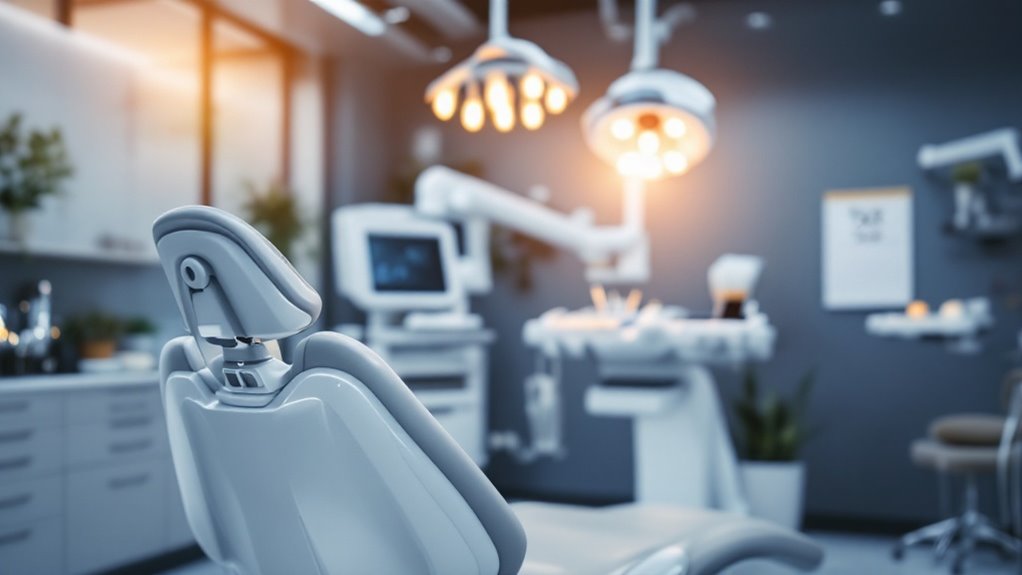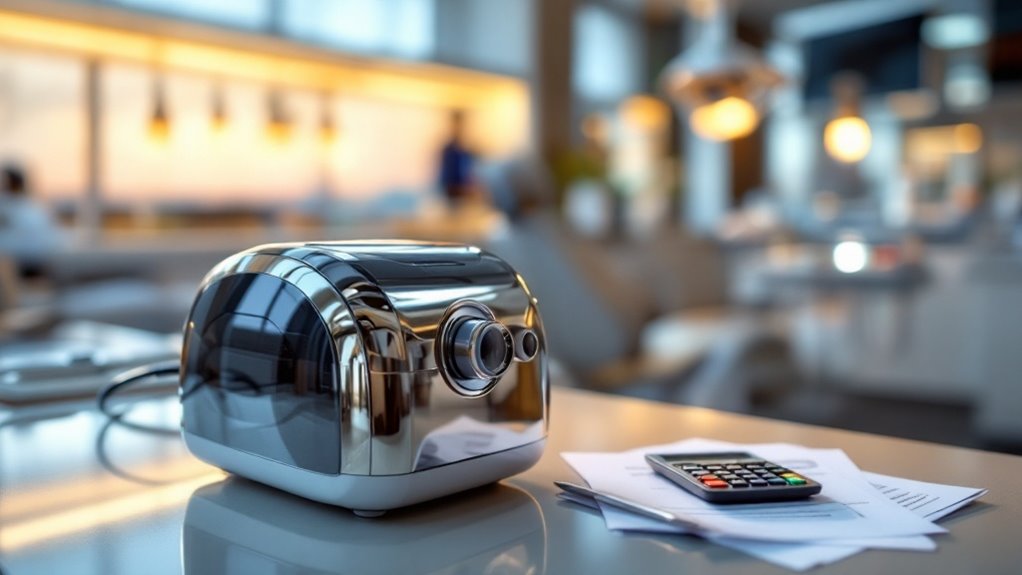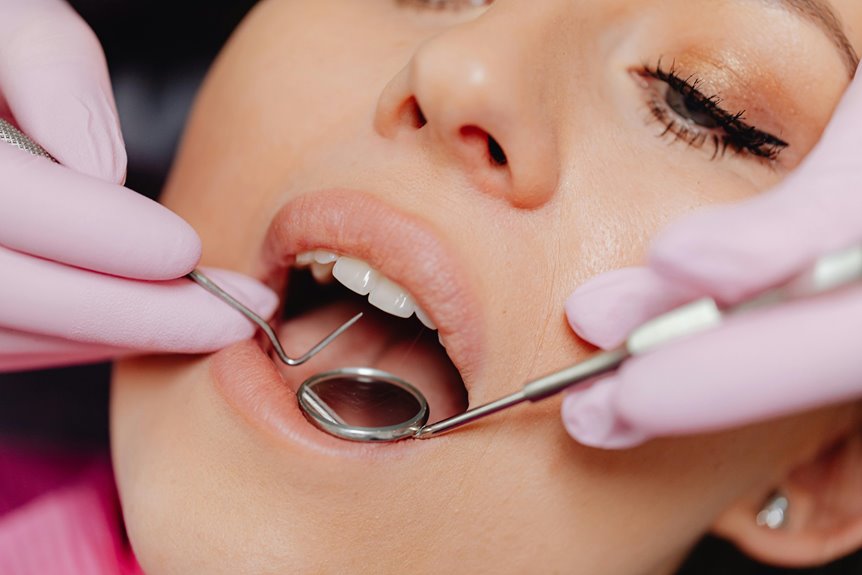When you think regarding managing the finances of your dental practice, understanding equipment depreciation strategies can greatly influence your bottom line. You might be familiar with methods like the Section 179 Deduction or Bonus Depreciation, but have you considered how these strategies can be tailored to fit your unique situation? Optimizing your tax savings isn't just focused on knowing the rules; it concerns implementing them effectively. As you explore these concepts, you'll find that the right approach can lead to considerable financial benefits—if you know where to start.
Key Takeaways
- Utilize Section 179 Deduction to expense qualifying dental equipment costs fully in the tax year, maximizing immediate tax savings.
- Take advantage of Bonus Depreciation for an additional 80% deduction on qualifying purchases, enhancing tax relief without spending limits.
- Apply the MACRS method for faster depreciation, allowing for larger deductions in the early years of asset ownership.
- Implement the Straight-Line Method for consistent annual deductions, providing predictable tax benefits over the asset's useful life.
- Consult a dental CPA to tailor strategies to your financial situation, ensuring compliance and optimized deductions.
Overview of Equipment Depreciation
Understanding equipment depreciation is essential for managing your dental practice's finances. Depreciation allows you to allocate the cost of dental equipment over its useful life, typically five years, helping you reduce taxable income.
By spreading these costs, you can better reflect your practice's financial health in your financial statements. Utilizing the Section 179 deduction can further enhance your tax benefits, as it lets you expense qualifying equipment immediately, accelerating your depreciation benefits.
You may also consider the Modified Accelerated Cost Recovery System (MACRS) for flexibility in how you deduct equipment costs. By understanding these strategies, you can maximize your tax savings and improve your practice's overall financial performance.
Common Depreciation Methods
When managing your dental practice's finances, knowing the various depreciation methods can greatly impact your tax strategy.
The Straight-Line Method spreads your depreciation expense evenly over the asset's useful life, making it predictable.
Alternatively, the Declining Balance Method accelerates depreciation in those initial years, giving you larger deductions upfront.
The Modified Accelerated Cost Recovery System (MACRS) is popular for tax purposes, allowing for faster depreciation over 5 or 7 years.
Additionally, you can take advantage of the Section 179 Deduction, expensing qualifying equipment costs right away, up to $1,160,000 in 2023.
If your spending exceeds that limit, consider Bonus Depreciation for an additional initial-year deduction currently set at 80%.
Each method has its benefits, so choose wisely!
Section 179 Deduction Explained

The Section 179 Deduction is a strong tax incentive that allows you to deduct the full cost of qualifying dental equipment purchased and placed in service within the same tax year, up to $1,160,000 for 2023.
As a practice owner, it's vital to guarantee that your assets are used at least 50% for business purposes to qualify. Additionally, your total spending on equipment shouldn't exceed $2,890,000.
This deduction applies to various types of dental equipment, like chairs, X-ray machines, and software. By calculating your deduction based on the equipment's cost and business use percentage, you can maximize your tax savings efficiently.
Understanding Bonus Depreciation
Bonus depreciation offers a significant tax advantage for dental practices looking to maximize their equipment investments. In 2023, you can deduct an incredible 80% of the cost of qualifying equipment placed in service, which includes both new and used assets.
Unlike Section 179, there's no spending cap, making this strategy ideal for larger purchases. Plus, even if your practice reports a net loss, bonus depreciation can still be applied, giving you immediate tax relief.
As you engage in tax planning, remember that the bonus depreciation percentage will decrease to 60% in 2024 and 40% in 2025. So, it's essential to act swiftly and strategically to optimize your deductions before these changes take effect.
Tax Elections and Reporting

How do you guarantee your dental practice takes full advantage of depreciation benefits? Start by making your depreciation election annually for any newly acquired dental equipment. This election determines how you'll handle tax reporting.
Remember, depreciation kicks off once the equipment's placed in service, meaning it's ready for use. You'll report this on Form 4562, which details your chosen method and the amount deducted.
Keep in mind, once you elect a method, switching it in future years is usually a no-go unless certain conditions apply. Additionally, track your accumulated depreciation on your Balance Sheet, while depreciation expense impacts your Profit & Loss statement.
This approach guarantees you maximize your financial reporting and tax benefits effectively.
Strategies for Maximizing Deductions
To maximize your deductions, consider leveraging various tax strategies available for your dental practice.
The Section 179 Deduction allows you to fully deduct qualifying equipment costs in the initial year, as long as it's used over 50% for business—up to $1,160,000 in 2023.
Additionally, Bonus Depreciation offers an extra 80% deduction on qualifying equipment placed in service this year, with no spending cap.
Cost Segregation can also identify components of your practice's building for faster depreciation, boosting your cash flow.
Choosing the right depreciation method, like Straight-Line or Declining Balance, tailored to your situation, guarantees ideal deductions.
A dental CPA can help navigate these strategies, guaranteeing compliance and minimizing your tax return liability.
Cash vs. Financed Purchases

When deciding between cash and financed purchases for dental equipment, you'll want to weigh the immediate benefits against long-term implications.
Cash purchases allow you to deduct the full cost of qualifying equipment in the year you buy it, which simplifies your tax returns and keeps cash flow steady.
However, with financed purchases, the principal payments aren't deductible, so you'll need to rely on regular depreciation methods. Only the interest portion can be deducted, complicating the process.
If you use a credit card and pay it off within the year, you'll enjoy similar benefits to cash purchases.
Ultimately, understanding the tax code is essential, so consider consulting a CPA to navigate these financial waters effectively for your dental practice.
Consulting With Financial Experts
Have you considered the benefits of consulting with financial experts for your dental practice? Engaging a dental CPA can help you navigate the complexities of depreciation, ensuring you maximize tax deductions effectively.
They'll tailor strategies to your specific financial situation, identifying whether Section 179 or bonus depreciation is the best fit for your cash flow needs. Regular consultations keep you informed about evolving tax laws that impact your practice.
Plus, a financial expert can assess the implications of financing options versus cash purchases, guiding you on how each choice affects your depreciation and potential write-offs.
Frequently Asked Questions
What Is the Depreciable Life of Dental Equipment?
The depreciable life of dental equipment usually ranges from 5 to 7 years. Understanding this helps you manage financial aspects effectively, ensuring proper equipment valuation and maximizing tax implications for your dental practice's depreciable assets.
What Are the Methods of Depreciation for Equipment?
Ever wondered how to depreciate your equipment effectively? You can choose methods like the Straight-Line Method, Declining Balance, Units of Production, Sum of Years, or Group Depreciation. Each method suits different financial strategies and needs.
Is Equipment 5 or 7 Year Depreciation?
When determining if your equipment's a 5 or 7-year depreciation, consider its lifespan and tax implications. Good asset management and financial planning through effective accounting practices can greatly impact your practice's bottom line.
How to Depreciate Medical Equipment?
To depreciate medical equipment effectively, focus on capital asset management. Consider tax implications, utilize financial forecasting, and guarantee accurate equipment valuation to optimize investment recovery and enhance your practice's financial health.
Conclusion
In the world of dental equipment, savvy depreciation strategies can be your golden ticket to financial success. By utilizing methods like Section 179 and Bonus Depreciation, you can convert your investments into substantial tax savings. Picture your practice thriving, equipped with the latest technology, while tax burdens lighten. Remember, consulting with a dental CPA can guide you through the maze of regulations, ensuring you maximize deductions and keep your practice flourishing. Take control of your financial future today!


